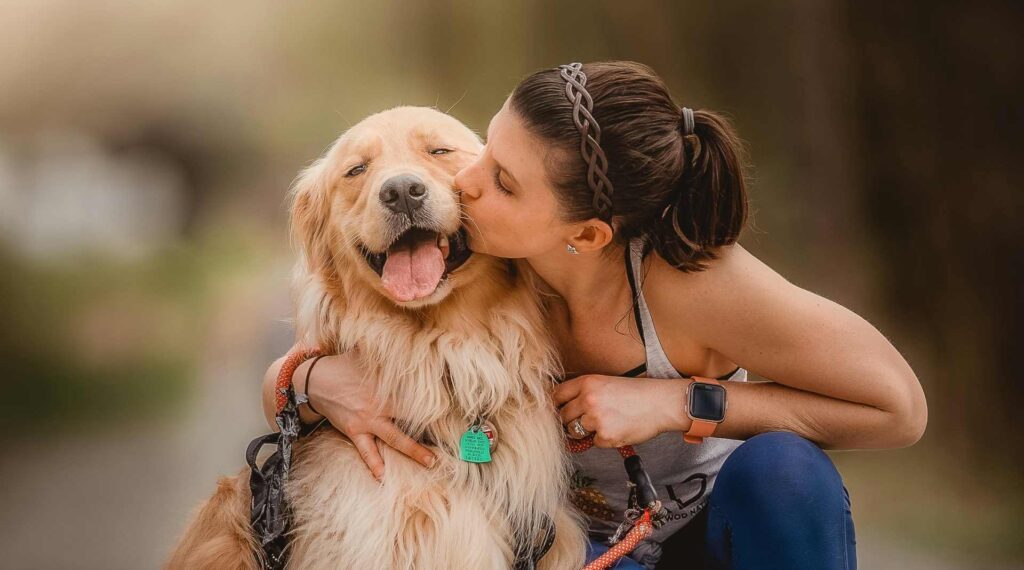Learn how to effectively use treats and praise in reward-based training to encourage desired behaviors in dogs and build a strong bond between you and your furry friend.
Introduction to Reward-Based Training
Reward-based training, a cornerstone of modern dog training techniques, leverages the power of positive reinforcement to encourage and instill desired behaviors in dogs.
At its core, this method operates on a simple yet profound principle: behaviors that are rewarded are more likely to be repeated. By using treats, praise, or both, trainers and owners can effectively communicate to their dogs which actions are desirable.
This approach is highly esteemed among animal behavior experts for its dual benefits; not only does it promote efficient learning by making training sessions more engaging and motivating for the dog, but it also significantly enhances the emotional bond between the dog and its owner.
Reward-based training, a gem in dog training techniques, uses positive reinforcement to shape desired behaviors.
The foundation of reward-based training is built on trust, respect, and mutual understanding, creating a positive and enriching environment for both parties involved.
The efficacy of reward-based training is backed by a growing body of scientific research, which highlights its advantages over traditional aversive methods. Studies have shown that dogs trained with positive reinforcement exhibit higher levels of enthusiasm during training sessions, display fewer signs of stress, and develop a stronger, more affectionate bond with their trainers.
This method not only fosters a healthy learning atmosphere but also contributes to the overall well-being and happiness of the dog. By prioritizing rewards over punishments, reward-based training aligns with a more humane and compassionate approach to dog training, reflecting a deeper understanding of canine psychology and behavior.
Benefits of Positive Reinforcement Training
Positive reinforcement training stands out for its significant impact on a dog’s willingness to learn and engage in training sessions. This method, which emphasizes rewarding good behavior instead of punishing the bad, creates a more enjoyable learning environment for the dog.
For example, when a dog sits on command and receives a treat or verbal praise, it’s more likely to repeat this behavior due to the positive experience associated with it. This approach not only makes training sessions more productive but also enhances the dog’s overall well-being by reducing stress and anxiety levels.
Studies have shown that dogs trained with positive reinforcement training exhibit lower stress indicators compared to those subjected to aversive training methods, making reward-based training not only more humane but also more effective in fostering a positive learning atmosphere.
It’s about teaching alternative behaviors, like rewarding sitting instead of jumping on guests, fostering a bond of trust and respect
Furthermore, positive reinforcement training is key to modifying unwanted behaviors in dogs by redirecting their focus towards desired actions. Instead of reprimanding a dog for jumping on guests, rewarding it for sitting politely when someone enters the room teaches the dog an alternative, acceptable behavior.
This method of training encourages dogs to make positive choices on their own, reinforcing the bond between dogs and their owners. By cultivating a relationship based on mutual trust and respect, owners find that their dogs are more attentive and responsive, making training a more rewarding experience for both parties involved.
This approach not only leads to a well-behaved dog but also strengthens the emotional connection, contributing to a harmonious living environment.
Effective Use of Treats in Training
The strategic use of treats in dog training cannot be overstated, particularly when it comes to the impact of quality, diversity, and timing on a dog’s learning process. High-value treats, like small pieces of chicken, cheese, or specially made dog treats, act as a powerful incentive when introducing new commands or behaviors.
These treats are highly palatable and tend to capture a dog’s attention more effectively than their regular kibble, making them ideal for reinforcing behaviors. However, the novelty of these treats can wear off if they are the only reward used, leading to reduced interest and motivation from the dog.
To counteract this, trainers are encouraged to rotate between a variety of treats, which not only helps in keeping the dog’s interest alive but also prevents the formation of dietary imbalances.
The art of using treats in dog training is all about quality, variety, and timing.
For example, mixing in vegetables or fruits that are safe for dogs, alongside their favorite high-value treats, can keep them eager and ready to learn without compromising their health.
Moreover, the timing of treat delivery is a critical aspect of successful reward-based training. Immediate reinforcement following the desired behavior helps solidify the dog’s understanding of which actions earn rewards, thereby speeding up the learning process.
A delay in reward can confuse dogs, making it harder for them to make the correct association between their action and the positive outcome. For instance, if a dog is taught to sit and is given a treat too long after sitting, they might not connect sitting with receiving a treat.
This underscores the importance of quick and precise reward delivery as a central principle in effective dog training practices. In addition, trainers should be mindful of the treat’s size, ensuring that it is small enough to be consumed quickly so as not to distract the dog from the training session, yet significant enough to be perceived as a reward.
This careful balancing act ensures that treats remain a potent tool for positive reinforcement, facilitating a rewarding learning experience for both dog and trainer.
The Role of Praise and Positive Reinforcement
The utilization of praise in dog training is a cornerstone of positive reinforcement strategies, offering a dynamic and emotionally enriching way to motivate and reward desired behaviors. Unlike treats, which appeal to a dog’s sense of taste and hunger, praise leverages the dog’s social and emotional instincts.
A warm, enthusiastic tone of voice, coupled with expressions of physical affection like petting or playful gestures, can effectively signal approval and satisfaction to the dog.
For instance, a simple “Good boy!” or “Well done!” exclaimed with genuine enthusiasm immediately after a desired behavior can reinforce the action more deeply than one might assume.
This method not only encourages the repetition of the praised behavior but also contributes significantly to the development of a trusting and affectionate relationship between the dog and the trainer.
Praise in dog training taps into a dog’s social instincts, offering a heartfelt way to reward behaviors.
Moreover, the strategic use of praise in training sessions goes beyond the mere acknowledgment of correct behavior; it fosters an environment of mutual respect and understanding.
By recognizing and celebrating the dog’s successes, the trainer communicates their appreciation for the dog’s efforts, thereby enhancing the dog’s motivation and eagerness to participate in training.
This approach aligns with findings that dogs trained using positive reinforcement methods, such as praise and treats, exhibit lower stress levels and a higher sense of well-being compared to those subjected to aversive training techniques.
Furthermore, integrating praise as a fundamental component of reward-based training underscores the importance of the emotional bond in the learning process, making each training session not just an opportunity for learning but also an occasion for strengthening the unique connection between dogs and their owners.

Tips for Successful Reward-Based Training
Creating a structured and enjoyable learning environment is pivotal for the success of reward-based training. Consistency, not only in the commands used but also in the rewards given, plays a crucial role in how effectively a dog learns and adheres to new behaviors.
When a dog recognizes a pattern in receiving rewards for specific actions, it becomes more inclined to repeat those actions in anticipation of positive reinforcement. For instance, if a command like “sit” is consistently followed by a treat or verbal praise, the dog will more likely sit on command in future scenarios.
This predictability in rewards fosters a sense of security and understanding in dogs, promoting a smoother training process.
Consistency in commands and rewards boosts a dog’s learning and behavior adherence.
Furthermore, setting clear and achievable goals is essential in guiding both the trainer and the dog through the learning journey. Starting with simple commands before gradually moving to more complex tasks allows the dog to build confidence and mastery step by step.
For example, teaching a dog to “stay” for just a few seconds before extending the duration over time can make this challenging behavior more attainable. Training sessions should ideally be conducted in environments with minimal distractions to ensure the dog’s attention is fully on the trainer.
Incorporating elements of play, such as using a favorite toy as a reward, can also enrich the training experience, making it more engaging and enjoyable for the dog.
This approach not only boosts the dog’s motivation but also strengthens the bond between the dog and its owner, creating a positive and rewarding training experience for both parties.

Common Mistakes in Reward-Based Training
While reward-based training has many advantages, there are common pitfalls to avoid. One such mistake is using treats as bribes, rather than rewards, which can lead to dogs only performing behaviors when a treat is visible.
Another issue is the timing of rewards; delaying the treat delivery can confuse the dog, making it difficult for them to associate the reward with the correct behavior. Over-reliance on verbal commands without providing a corresponding reward can also undermine a dog’s motivation and adherence to training.
In conclusion, reward-based dog training, through the strategic use of treats and praise, offers a humane and effective approach to teaching and reinforcing desired behaviors in dogs. This method not only enhances the learning experience but also strengthens the bond between dogs and their owners, making it a highly recommended strategy for dog training.
Related Articles:
Transform Your Dogs Behavior with The Online Dog Trainer: A Guide to Effective Training
Unlocking Humane Dog Training Success: Why Positive Reinforcement Outshines Punishment




